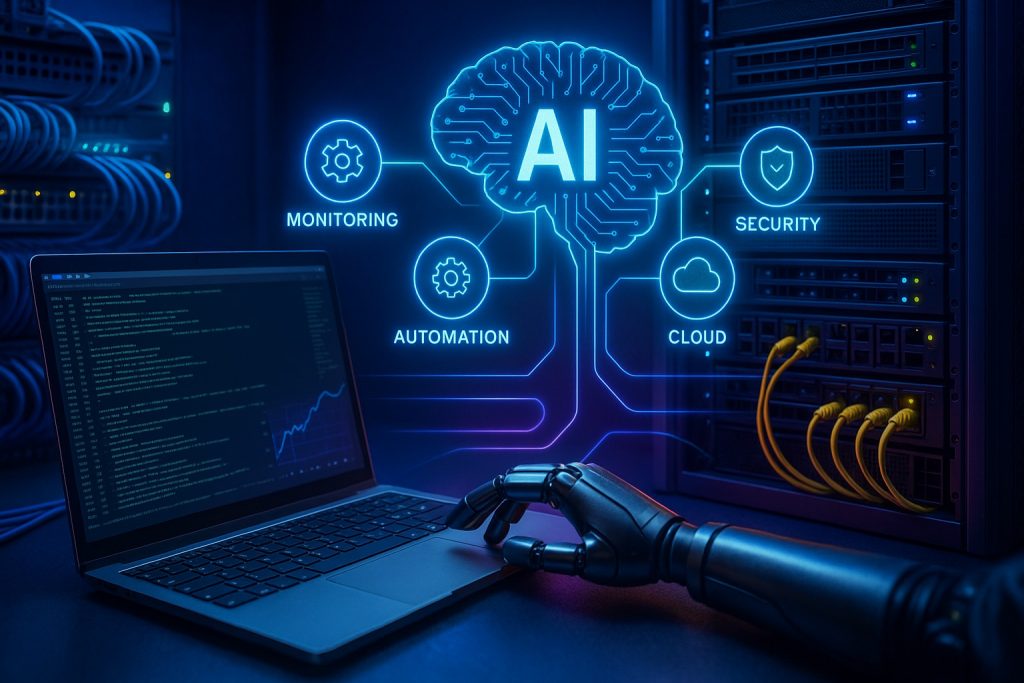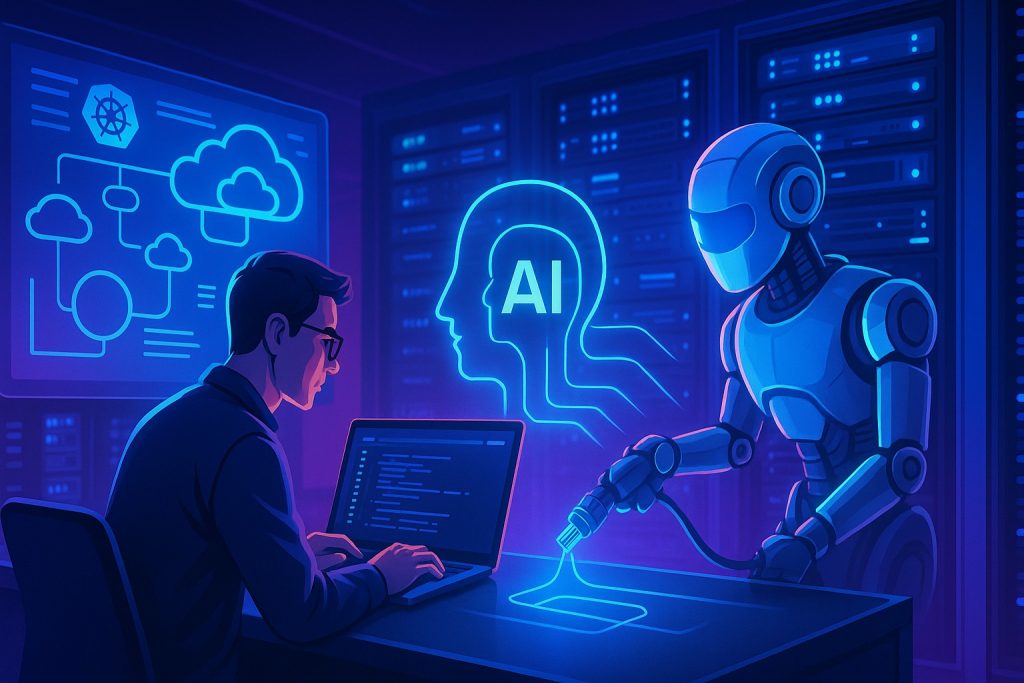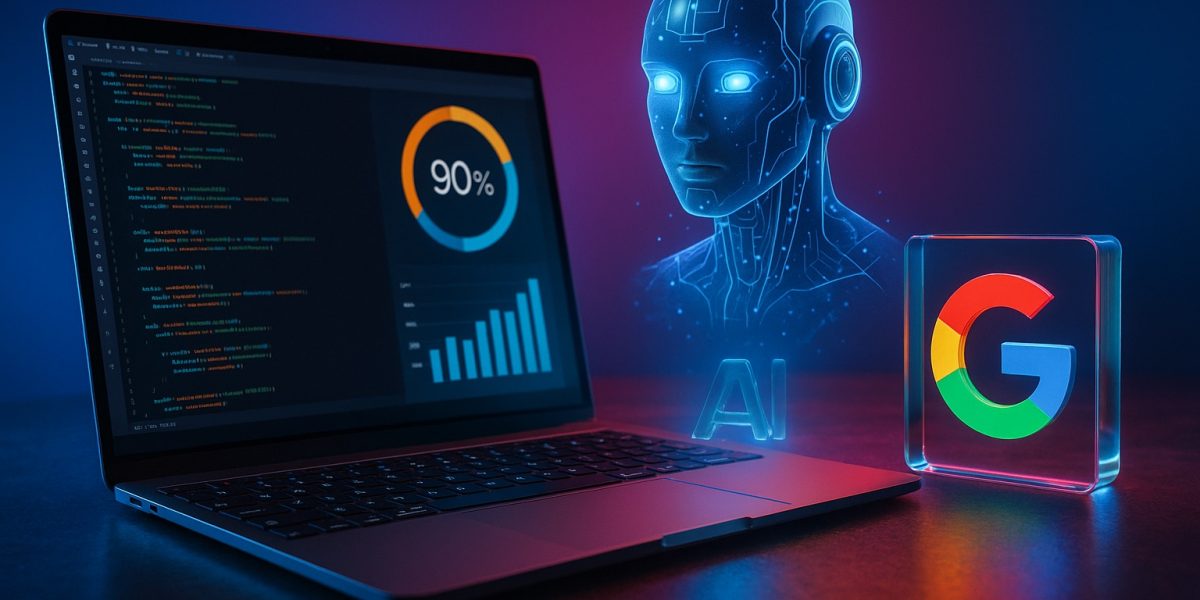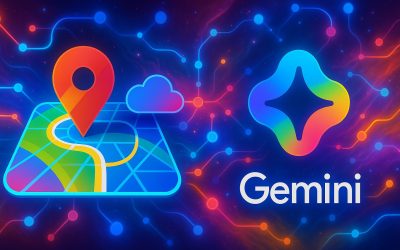The software development industry faces its most significant technological shift since the introduction of integrated development environments. Our expert team has thoroughly analyzed Google Cloud’s latest DORA research report to help you understand how AI tool adoption is reshaping development workflows and what these changes mean for both individual developers and organizations.
Our methodology involves examining survey data from nearly 5,000 IT professionals worldwide, productivity impact assessment, and trust level evaluation across different development scenarios. Every insight provides actionable understanding of how AI integration affects real-world software development practices.
Key Evaluation Criteria:
- Adoption rate trends and usage patterns across development teams
- Productivity impact measurement and workflow integration effectiveness
- Code quality improvements and development efficiency gains
- Trust levels and verification practices for AI-generated code
- Industry employment trends and market dynamics
- Organizational capabilities required for successful AI implementation
We continuously monitor developer tool evolution and update our analysis to reflect changing adoption patterns, ensuring comprehensive coverage of this rapidly evolving landscape.
AI Development Impact Overview:
- Productivity Enhancement Champion: 80% report increased work efficiency
- Code Quality Improvement Specialist: 59% see positive impact on code standards
- Trust Verification Reality Check: Only 24% express high confidence in AI output
Each assessment includes detailed examination of adoption patterns, practical benefits, and implementation challenges across different development contexts.

Productivity Enhancement Champion: Widespread Efficiency Gains Drive Adoption
The 90% adoption rate in 2025 represents a dramatic 14% increase from the previous year, with developers integrating AI tools into core workflows spanning code generation, testing, and security verification processes.
Daily Usage Integration: Developers now dedicate a median two hours daily to AI-assisted tasks, indicating that artificial intelligence has become fundamental to modern software development rather than an occasional convenience tool. This substantial time investment demonstrates that AI tools deliver sufficient value to justify significant workflow modifications.
Workflow Integration Success: The research reveals that 65% of surveyed professionals heavily depend on AI for software development work, suggesting that these tools have moved beyond experimental usage into mission-critical development processes. This dependency level indicates successful integration with existing development methodologies and tool chains.
Efficiency Impact Measurement: More than 80% of respondents report that AI has enhanced their work efficiency, providing quantifiable productivity improvements that justify continued investment in AI-powered development tools. These gains extend beyond simple speed increases to encompass improved problem-solving capabilities and reduced cognitive load for routine tasks.
Google Internal Evidence: Ryan Salva, overseeing Google’s programming tools including Gemini Code Assist, notes that the “absolute majority” of Google teams incorporate AI into their workflows. CEO Sundar Pichai reported that AI tools have increased Google’s engineering team productivity by 10%, with over 25% of new company code now generated by AI systems.
Code Quality Improvement Specialist: Beyond Speed Enhancement
While productivity gains drive initial adoption, sustained usage depends on demonstrable improvements in code quality and development outcomes rather than mere acceleration of existing processes.
Quality Impact Assessment: The finding that 59% of developers report positive effects on code quality suggests that AI tools provide substantive improvements beyond simple task automation. This quality enhancement addresses concerns that AI might prioritize speed over craftsmanship in software development.
Comprehensive Workflow Enhancement: AI integration spans multiple development phases including code generation, testing procedures, and security verification, indicating that these tools provide value across the entire software development lifecycle rather than isolated task assistance.
Professional Development Impact: The quality improvements suggest that AI tools may be elevating overall development standards by providing consistent best practice recommendations, error detection capabilities, and code optimization suggestions that individual developers might overlook.
Trust Verification Reality Check: The Adoption-Confidence Disconnect
Despite widespread adoption and reported benefits, a significant trust gap persists between AI tool usage and developer confidence in generated outputs.
Trust Level Distribution: Only 24% of developers express high trust in AI-generated code, with 20% trusting it “quite a bit” and merely 4% reporting “complete trust.” Conversely, 30% trust AI results “little” or “not at all,” creating a paradox where widespread usage coexists with limited confidence.
Industry-Wide Trust Trends: This trust gap aligns with broader industry patterns, as Stack Overflow’s 2025 survey revealed that 46% of developers distrust AI output accuracy, representing a significant increase from 31% in the previous year. This growing skepticism suggests that increased exposure to AI tools may be revealing limitations rather than building confidence.
Verification Workflow Implications: The trust paradox indicates that AI primarily serves as an assistive tool requiring human oversight rather than a replacement for developer judgment. This dynamic necessitates robust verification processes and code review practices to maintain quality standards while capturing productivity benefits.
Human-AI Collaboration Model: The disconnect between usage and trust suggests that successful AI integration requires treating these tools as sophisticated assistants that enhance human capability rather than autonomous systems capable of independent decision-making.
Industry Employment Context: Market Challenges Amid Technology Adoption
The rapid AI integration occurs during a challenging period for software development employment, particularly affecting entry-level positions and recent graduates seeking industry opportunities.
Employment Market Dynamics: Federal Reserve Bank of New York data shows that unemployment rates among recent computer science graduates now exceed those for art history and English majors. Indeed reports a 71% decline in software engineer job postings from February 2022 to August 2025, indicating significant market contraction.
Entry-Level Impact Assessment: These employment trends raise questions about how AI adoption affects opportunities for new developers entering the field, as automation may be reducing demand for routine development tasks traditionally assigned to junior team members.
Market Adaptation Requirements: The employment challenges suggest that both individual developers and organizations must adapt to changing skill requirements and workflow patterns as AI tools reshape traditional development role definitions.
Organizational Implementation Framework
Google’s introduction of the DORA AI capabilities model addresses the gap between AI tool adoption and organizational readiness for effective implementation.
Seven-Practice Framework: The model highlights seven technical and cultural practices that amplify AI’s organizational impact, emphasizing user focus, clear communication protocols, and small-batch workflows as essential conditions for successful AI integration.
Cultural Change Requirements: Salva notes that despite AI-accelerated development, teams still require robust feedback mechanisms to maintain software quality. Organizations must balance increased development velocity with established quality assurance processes and verification practices.
Implementation Success Factors: The research indicates that AI’s ultimate impact depends less on adoption speed than on organizations’ ability to establish appropriate technical and cultural conditions for effective AI-supported development workflows.

Strategic Recommendations for Different Development Contexts
Individual Developers: Embrace AI tools as productivity enhancers while maintaining strong verification practices and code review skills. The trust gap demonstrates the continued importance of human judgment in software development.
Development Teams: Implement AI tools gradually with robust feedback mechanisms and quality assurance processes. Focus on establishing clear protocols for AI-generated code verification and integration into existing workflows.
Technology Organizations: Develop comprehensive AI adoption strategies that address both technical implementation and cultural change requirements. The DORA capabilities model provides a framework for systematic AI integration.
Educational Institutions: Adapt computer science curricula to include AI tool proficiency while emphasizing fundamental programming skills and critical evaluation capabilities that remain essential despite AI assistance.
Entry-Level Developers: Focus on developing skills that complement AI capabilities, including system design, problem-solving, and code verification abilities that remain uniquely human in AI-assisted development environments.
Understanding the Development Evolution
Google’s research reveals that AI has achieved mainstream adoption in software development while simultaneously exposing the complexity of human-AI collaboration in professional contexts. The widespread usage combined with persistent trust concerns indicates that the industry is still learning how to effectively integrate these powerful tools.
The productivity and quality improvements demonstrate genuine value from AI assistance, while the trust gap highlights the continued importance of human oversight and verification in software development. This dynamic suggests that successful AI integration requires balancing automation benefits with maintained quality standards and professional judgment.
The employment market challenges add urgency to understanding how AI adoption reshapes development careers and organizational structures, making it essential for both individuals and organizations to adapt thoughtfully to this technological transformation while preserving the human expertise that remains crucial for effective software development.




Post a comment